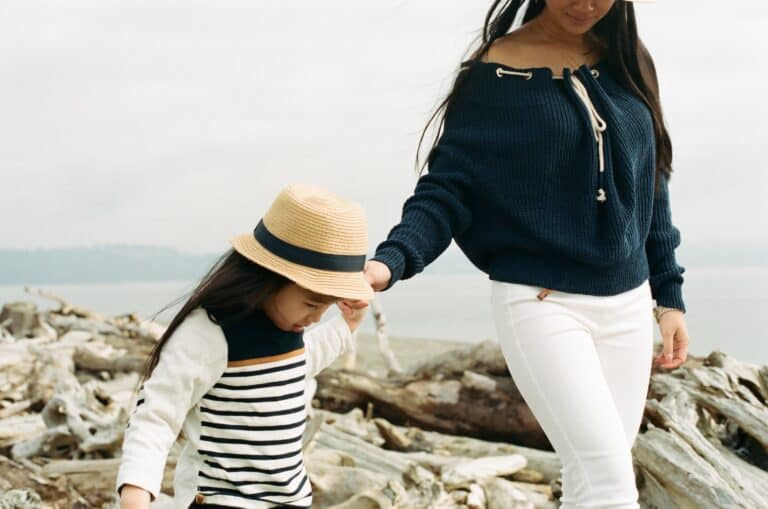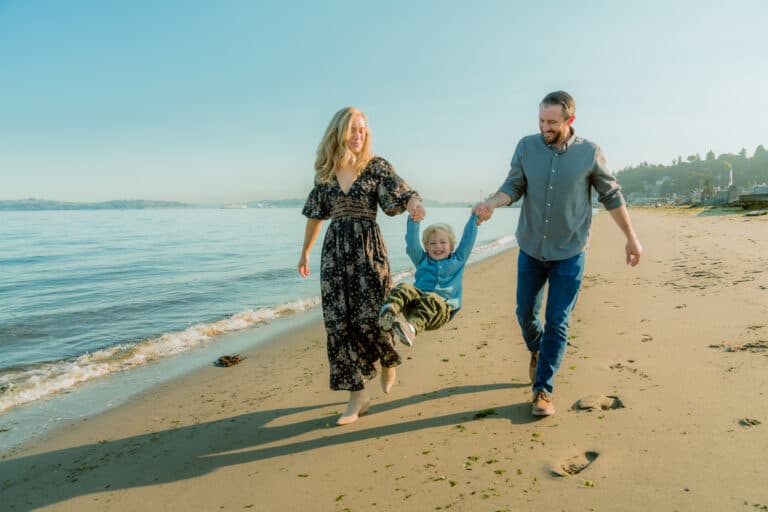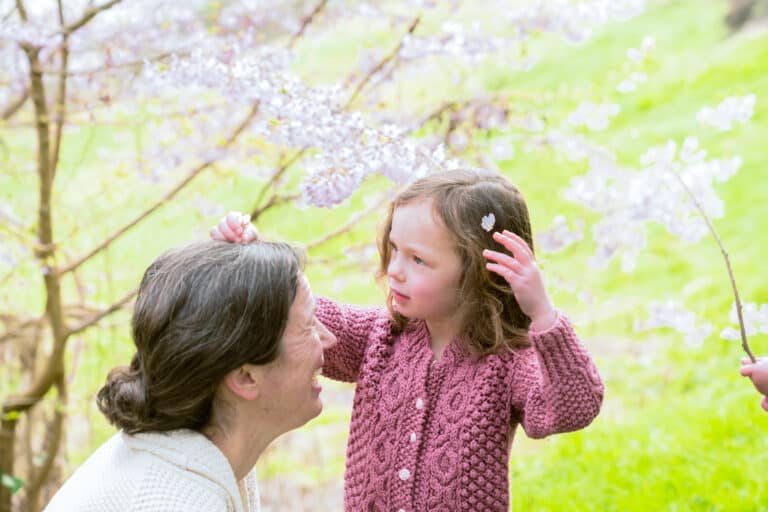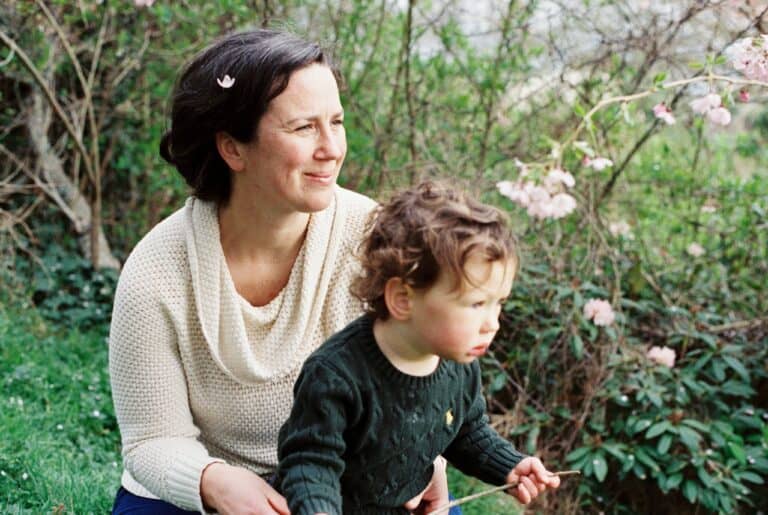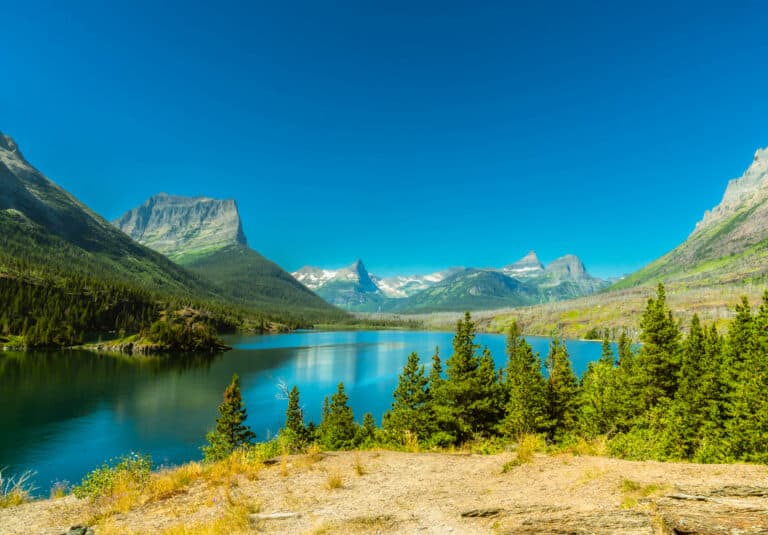How I Choose Hikes For Kids
Hiking with kids is an investment. By that I mean a lot of work goes into every stage of the process but you also reap myriad rewards. There’s a concept in Norway called the “doorstep mile” where the hardest part is just getting out the door. I often feel that for new hikers or people new to an area, the hardest part is knowing how to choose hikes for kids and then getting out the door. Today, I’ll be explaining how I choose hikes for my own kids and how you can get your kids excited to get out on the trail.
Anyone Can Outdoors
I did not grow up hiking. I lived all over the US, but mostly in the Inland Empire in Southern California (shoutout to the 909) where it was frequently over 100 degrees by 11AM. Not exactly ideal hiking weather. And going up into the San Gabriels when it’s that hot? Pass. But I lived for a summer in my teens in the Black Hills in South Dakota in a little cottage surrounded by woods. And I spent pretty much every day exploring those woods. When I met my husband, our first big day date was him trying to take me on a three-mile hike. I say “trying” because I had never truly hiked before, did not have appropriate footwear, and could not keep his pace. I basically felt like this Reductress article, trying to be cool and failing.
But I had the bug. I fell in love with the mountains in Montana and lived for summers there. My husband spent most of his childhood outdoors and I knew I wanted that for our kids, too. Besides the myriad benefits of outdoor time, it fosters an appreciation for the outdoors and respect for our environment. It teaches problem-solving and is a great way to foster both independence and resilience. No matter your age, there’s nothing better than getting to the end of a hard hike and seeing how far you’ve come.

All of this to say I spent more time in traffic than on a trail growing up. I’m a firm believer than anyone can learn to be “outdoorsy,” you just need the want-to and good resources. And hiking with kids is a great way to start slow. It teaches you proper preparation, how to build stamina for longer and more strenuous hikes, and to appreciate your surroundings.
Hiking With Kids: Starting ‘Em Young
As I said, hiking with kids is an investment. Some days it can feel like we spend longer prepping to go on a hike than we do actually hiking. And the younger kids are, the more things we need to bring, so the longer we spend preparing. It can be overwhelming. But we can break the process down into a few manageable steps. Once we get those steps down, we can pretty much be out the door and ready to hit the trail in under 20 minutes.
I don’t believe there’s a “best age” for starting hiking with kids. I personally took my oldest on his first hike in Mount Rainier National Park at 7 weeks. Yes, 7 weeks. Yours might be 2 or 6 or 15. At any age, you can get kids interested in hiking and choose hikes for their age and interest level.

Hiking With Infants
Hiking with infants is tied with hiking with toddlers as the easiest hikes you’ll do with kids and also the hardest. With a good carrier (soft or structured, depending on their age and your mileage), you can (mostly) go at your own pace, stopping only for feedings and diaper changes. You can go as long as you want, since your babe will likely sleep most of the time. You can talk with them about what you’re seeing, which is great for language development.
The biggest downside is the amount of stuff you have to carry. Which is why a good carrier is important. So let’s talk carriers before we talk hikes.
A soft carrier is great for shorter, flatter distances. A structured carrier is great for all terrains (including urban!) and hike lengths. Below are my favourite carriers.
Soft Carriers
ErgoBaby 360: We loved this carrier with both our very large children. It was great for longer distances when we needed more support, both for my back and their bodies. It saw us through both long walks on trails at the dog park and many a Mariners game.
Baby K’Tan: This is the carrier I used to take my oldest on his first hike. It offered him the most support and was easiest for him to sleep in on the fairly easy ~1 mile hike in the woods we did at Rainier. When we had our second, we also used a Moby Wrap, as it was easiest for using with different-heighted carers (me being 5’4″, my husband 6’4″).
Structured Carriers
For longer hikes with more uneven terrain (and to just be able to carry more stuff), you can’t beat a structured carrier.
Osprey Poco: We ultimately chose this over the Deuter as it was easier for us to switch between my husband and I. Easy to get on and off, it was great for when both kids would want to stop for a snack or to get out to walk.
Deuter Kid Comfort: Another popular carrier that I see on the trails all the time. The extra storage on the front/fanny pack is a great touch.
I can’t recommend enough trying on the carriers at REI. The staff are super helpful and it’s much better to try the carrier out as much as you can before buying than invest and realize you hate it.
OK! Now that we’ve talked gear, we can talk choosing hikes for kids.

Choosing Hikes With Infants
Distance From Home: With infants, I tended to stay under 3 hours from home unless I was with another adult. This was largely out of concern for safety, should anything happen to either of us on the trail. There’s always a possibility of injury, and I’m the type to trip over my own feet when walking, so I played it safer when they were littler. It’s also just easier to bail and get back home if your tiny is having a super hard time.
Hike Length: This age, it’s really up to how much you can do and how much your littles will tolerate. My kids love being outside, so the mileage choice was really up to me. When starting hiking with a new carrier, I would choose a shorter hike than you might normally, unless you’re used to schlepping around a big pack.
Elevation: Hiking with a carrier, soft or structured, changes your center of gravity and balance. Just like choosing a shorter hike with your carrier to start, choose a hike with less elevation gain and more even terrain, at least until you’re comfortable.
Sustenance: This will all depend on what stage of feeding they’re in. No matter what, you always want to pack a little extra in terms of food for them and for yourself! Maybe you get stuck in traffic on the way home and they’re protesting for a bottle or you feel like you’re going to pass out if you don’t get a Clif bar right now. I’ll go over what I like to pack for snacks and lunches in a later post, but I can’t stress enough how important it is to have enough snacks and water on hikes. Both because we all get hungry and thirsty and in the event something does happen, even a twisted ankle, you always want to have lots of food and water to get you through.

Choosing Hikes with Toddlers and Preschoolers
I’m combining these because literally who can tell when the cutoff between toddler and preschooler is (I know it’s around age 3 but we’re really just splitting hairs).
Distance From Home: For this age, I still stick to 3 hours or less. You can factor in car naps into this one if your little will car nap (mine were and remain champion car nappers). We always timed our drives to include nap times which helped everyone have more energy on the hike. You can also plan for them to nap on the way back. It’s like a fun choose your own adventure!
Hike Length: Choosing hikes for kids at this age requires a little more flexibility. When they’re infants, they can basically stay put. Now they’re walking and wiggly and want to explore. Depending on how your little likes their carrier, you may be stopping to take them out to let them walk and put them back in. Or maybe they’re good chilling and you just have a much heavier pack to carry now. It all depends on your specific kid. I still kept my hikes around 1-2 miles at this age to account for snack and exploring breaks.
When they got to the point that they could walk on their own, I generally did 1 mile for every year old they were. This obviously isn’t a hard and fast rule but it gave me a good estimate of how much activity they could handle per day. My 3 year old can do just under 3 miles right now on his own. Not every kid will. You know your little better than I.
Basically, you want to keep these hikes shorter both for exploration (nature is a fantastic school) and to account for little legs.
Elevation: We like hikes with some variation in elevation but nothing too strenuous. We only just last month did our first major elevation gain with lots of switchbacks. A lot of this is for safety reasons: the higher up you get, the farther everyone has to fall. You also need to be able to ensure your littles can listen to directions to keep everyone safe. If you’re scrambling to keep them away from a ledge, that’s not safe for anyone. Hikes with some elevation changes are great for muscle and gross motor development, but save the more strenuous hikes for when they get bigger, especially if you’re hiking with just them and not with another family.
Sustenance: You will carry so many snacks at this stage. The good news is that the bigger they get, the more they can carry, and that includes carrying their own snacks. Kids at this stage love to help and practice what they’re learning through play. So when you choose hikes with kids, choose ones where they can help. Maybe they carry their water bottle. Maybe they carry their magnifying glass and binoculars. Whatever you choose, having them help also fosters independence and teaches them proper preparation. It’s a big win for everyone.

Hiking With Bigger Kids, Tweens, and Teens
You’ll notice this is a shorter section. That’s because a) my kids are little and b) as you go through each stage, you’re just scaling up. As your kids get older, they can do longer hikes. They can carry more in their pack. You can go longer distances. Family backpacking trips can become a thing!
As your kids get older, you can also take safety classes together. Check out classes at REI or Google your local wilderness club chapter, whatever that looks like. Knowing how to care for yourself and others on the trail is an invaluable skill.
You can also involve them more in planning hikes, including letting them pick. Give them a guidebook or direct them to something like AllTrails (or Washington Trails Association if you’re in Washington), outline some criteria or let them know what you’d like to do, and let them choose. Maybe they’ll pick one you’ve not done in a while, or they pick something you didn’t expect. Either way, this also goes a long way toward fostering independence, collaboration (which is huge as they get older), and teaching preparation. You can collaborate to decide what you may need to take with you, and they can help pack your packs.
I will say if your kids didn’t grow up hiking (which, again, I did not, and there’s no shame in it) and you want to get them started on it, pack some snacks and take a nature walk. Make it as low-pressure as possible. Use it as a chance to connect with them, even if you’re just walking together in silence. There’s nothing wrong with silence. But if you’re in bear country, don’t forget your bear bells; you can never be too careful.
Activities and Hiking Snacks
These will both be longer posts later on, but for both, keep them age-appropriate. Magnifying glasses and binoculars are a huge hit with littler kids. Bring paper and pencils for bigger kids and have them draw what they see or collect fallen leaves to do crafts with later. Discuss the benefits of wildfires when walking through a burn scar. When you’re looking for hikes for kids, look for things that might have points of interest you can discuss, even if it’s just a different ecosystem (rainforest, alpine, etc.). You can also do the same hikes through different times of the year to talk about the changing of the seasons. The possibilities are pretty much endless!
For snacks, again, always bring more than you need. You don’t have to get fancy with your lunches, but you do you. Make sure to bring lots of good proteins and carbohydrates for sustenance and energy. I’ll talk more about gear I like and foods I pack in another post, but whatever you choose, remember to leave no trace. Whatever you pack in, you need to pack out. It’s not just nice for the other hikers — it’s critical for the environment.

Conclusion
Choosing hikes for kids can seem incredibly daunting, especially if you’ve never done it before. So let’s go over some final points before you get ready to go out there:
- There’s no shame in asking for help. Want to start hiking but have no idea where to start? Well, you’re in a good spot here! You can also ask others you might know who go hiking how they do it. Maybe ask to go with them a few times to get the hang of everything and build everyone’s confidence. Attend a meetup through Hike It Baby or a similar local group.
- Remember, everyone starts somewhere. No matter what it is you do, everyone was a beginner once. People should be welcoming and helpful. Anyone who is not is a gatekeeping asshole and not worth your time. Not only is their piss-poor attitude a reflection of what a waste of time they are as a person, it’s honestly kinda dangerous. It doesn’t benefit anyone to have people out there who don’t know what they’re doing and who might be unsafe on the trail. Hiking is for everyone.
- Take it slow. Don’t try to do too much at once. Pick short, easy hikes to start. Don’t feel like you have to invest in fancy gear in order to get out the door. Just pack your snacks, comfy shoes, water, and curiosity. If you decide you like hiking, you can invest a little at a time. After each hike, assess what you liked and didn’t. Would new gear help? Maybe prioritize that.
- Choosing hikes for kids is a balancing act. Not every hike is gonna be a hit. That’s okay! Maybe someone was having an off-day. Maybe the trail just wasn’t what you thought it would be. We’ve all been there. If you’re on the trail and it sucks, turn around! You can leave! Try again some other time, or don’t! There’s plenty of trails I don’t think I’d do again, and there’s plenty I return to all the time. The more you do, the more you learn about what you like and don’t. That’s one of the beautiful things about hiking!
Ready to get out there? Hell yeah! Welcome, friend! I hope you love hiking as much as I do. Check out my outdoor gear guide if you need some ideas on what to outfit yourself and your kids in and go outside.

A Word From Our Sponsor
While you’re here, remember that I specialize in adventure sessions. One of the benefits of doing so many hikes and exploring so many places around Washington and Western Montana is that I know a ton of beautiful spots for photos. Want to take some photos in our beautiful outdoors? Click that there button and let’s chat.

